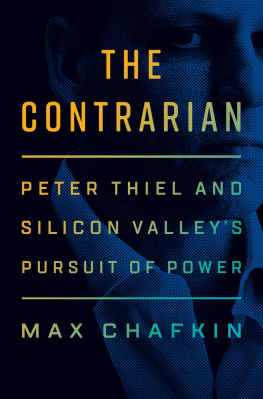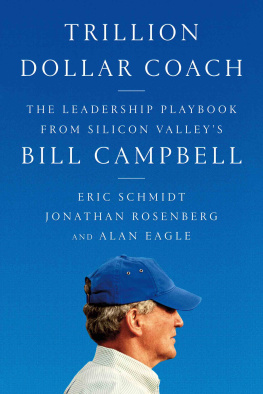Thank you for downloading this Simon & Schuster ebook.
Get a FREE ebook when you join our mailing list. Plus, get updates on new releases, deals, recommended reads, and more from Simon & Schuster. Click below to sign up and see terms and conditions.
CLICK HERE TO SIGN UP
Already a subscriber? Provide your email again so we can register this ebook and send you more of what you like to read. You will continue to receive exclusive offers in your inbox.
We hope you enjoyed reading this Simon & Schuster ebook.
Get a FREE ebook when you join our mailing list. Plus, get updates on new releases, deals, recommended reads, and more from Simon & Schuster. Click below to sign up and see terms and conditions.
CLICK HERE TO SIGN UP
Already a subscriber? Provide your email again so we can register this ebook and send you more of what you like to read. You will continue to receive exclusive offers in your inbox.
First published in Great Britain by Simon & Schuster UK Ltd, 2017
A CBS CompAny
Copyright 2017 by Leslie Berlin
This book is copyright under the Berne Convention.
No reproduction without permission.
All rights reserved.
The right of Leslie Berlin to be identified as the author of this work has been asserted by her in accordance with sections 77 and 78 of the Copyright, Designs and Patents Act, 1988.
Simon & Schuster UK Ltd
1st Floor
222 Grays Inn Road
London WC1X 8HB
www.simonandschuster.co.uk
www.simonandschuster.com.au
www.simonandschuster.co.in
Simon & Schuster Australia, Sydney
Simon & Schuster India, New Delhi
The author and publishers have made all reasonable efforts to contact copyright-holders for permission, and apologise for any omissions or errors in the form of credits given. Corrections may be made to future printings.
A CIP catalogue record for this book is available from the British Library
Hardback ISBN: 978-1-4711-7050-8
Trade paperback ISBN: 978-1-84983-870-2
eBook ISBN: 978-1-84983-872-6
Interior design by Lewelin Polanco
To the women of the North 24th Writers Workshop
No you, no book
AND
To Rick Dodd
No you, no me
Heres to the crazy ones. The misfits. The rebels. The troublemakers. The round pegs in the square holes. The ones who see things differently. Theyre not fond of rules. And they have no respect for the status quo. You can quote them, disagree with them, glorify or vilify them. About the only thing you cant do is ignore them. Because they change things. They push the human race forward. And while some may see them as the crazy ones, we see genius. Because the people who are crazy enough to think they can change the world, are the ones who do.
APPLE COMPUTER ADVERTISEMENT (1997)
Indiana Jones: Im going after that truck.
Sallah: How?
Indiana Jones: I dont know. Im making this up as I go.
LAWRENCE KASDAN, THE RAIDERS OF THE LOST ARK (1981)
Contents
Introduction
 A BIT LIKE LOVE
A BIT LIKE LOVE
Tens of millions of people have watched the video of Steve Jobss 2005 commencement address at Stanford University. Executives and journalists quote from it. An exhibit at Londons Victoria and Albert Museum featured excerpts. Every year, a neighbor festoons a pair of trees along Palo Altos bicycle boulevard with photos of Jobs and quotes, many from the commencement address. The speech, given on a sunny June morning and lasting just over fourteen minutes, is indeed remarkable; in it, Jobs talks about his adoption, his cancer diagnosis, his work, his family, and his inspirations.
About six minutes into his address, Jobs tells the story of being fired from Apple when he was thirty years old. The focus of my entire adult life was gone, and it was devastating, he says. The next lines are easy to overlook but vital for anyone who wants to understand how Silicon Valley works: I felt that I had let the previous generation of entrepreneurs downthat I had dropped the baton as it was being passed to me. I met with David Packard and Bob Noyce and tried to apologize for screwing up so badly.
Throughout his career, Jobs spent time with older entrepreneurs such as Intels Robert Noyce and Andy Grove, as well as with Regis McKenna, a former employee of National Semiconductor who founded Silicon Valleys leading public relations and marketing firm. In 2003, I asked Jobs why he spent so much time with the semiconductor pioneers. He said he wanted to smell that second wonderful era of the valley, the semiconductor
Jobs did not mention it in his Stanford speech, but after he returned to Apple, he passed the baton forward to a new generation of entrepreneurs. Google cofounders Sergey Brin and Larry Page went to Jobs for advice when they were starting their company. Facebooks Mark Zuckerberg considered Jobs a mentor. I once saw Zuckerberg eating dinner in the same hidden corner of a low-key Palo Alto Mexican restaurant where, years before, I had seen Jobs. Zuckerberg was in the same seat, at the same table, sitting, as Jobs had, alone, his back to the window.
The period covered in this book marks the first time that the generational handoff happened on a grand scale, as pioneers of the semiconductor industry passed the baton to younger up-and-comers developing innovations that would one day occupy the center of our lives.(PARC), which would pioneer computings graphical user interface, icons, Ethernet, and laser printer. Upstart CEOs with an eye to the future lay the foundation for the now-tight political alliance between Silicon Valley and Washington, DC.
These years marked Silicon Valleys coming of age, the critical period when the Valley was transformed from a relatively obscure regional economy with the microchip industry at its heart into an economic engine whose rate of job growth has been double that of the country as a whole for the past five years. In the process, Silicon Valley has spawned countless imitators and numerous industries that together have created the modern world. Troublemakers charts these changes through the lives of the people who made them happen. The book opens in 1969, when the transformation is just beginning in the shadow of the Vietnam War. The story ends in 1983, after the world has begun to experience the effects of these revolutionary innovations. By that date, a new generation of innovators and industries was on the rise.
In 1969, the name Silicon Valley did not exist; it would be two years before the region renowned for its plum and apricot orchards gained its current moniker. Starter homes in Palo Alto that now sell for nearly $2 million cost $60,000, but a computer with less processing power than todays $250 programmable thermostat cost hundreds of thousands of dollars. The term biotechnology had not been coined, and the prospect of combining genes to create a hybrid life-form sounded like science fiction. Computers occupied rooms, not desktopsand certainly not pockets or wristbands. Silicon Valley companies built products for engineers, not consumers. To the extent that the average American thought at all about computers, it was only to curse them as the culprits blamed by banks when a checkbook did not balance properly.
Today we consider Silicon Valley the hub of the information economy. In 1969, however, the Valley was a manufacturing center; 60 percent of people working in the local electronics industry worked production jobs.
Software companies were going public. Pension funds had invested hundreds of millions of dollars with venture capitalists backing the riskiest early-stage investments. The US economy was beginning to reshape itself around information and services, rather than manufacturing. No longer did politicians claim that what was good for General Motors and other large companies was good for America. Entrepreneurs were the new American business heroes.
Next page





 A BIT LIKE LOVE
A BIT LIKE LOVE